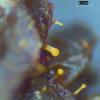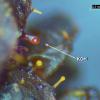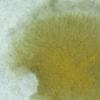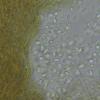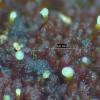
09-12-2025 12:06
 Andgelo Mombert
Andgelo Mombert
Bonjour,Je recherche l'article concernant Hypobryo

07-12-2025 16:07
Arnold BüschlenHallo, ich habe in einer Moos-Aufsammlung (epiphy

08-12-2025 21:04
Mark Stevens"Hello everyone,I'm relatively new to microscopy (

08-12-2025 18:59
 Lothar Krieglsteiner
Lothar Krieglsteiner
.. found by a seminar-participant, I do not know t

08-12-2025 17:37
 Lothar Krieglsteiner
Lothar Krieglsteiner
20.6.25, on branch of Abies infected and thickened

16-03-2014 22:00
Hello,I found this species a few months ago but ha

08-12-2025 13:39
Thomas Læssøehttps://svampe.databasen.org/observations/10572899
Gliocladium like fungus
Eduard Osieck,
03-04-2020 14:56
A similar hyphomycete but taller (about 0,5 mm), heads whitish and similar conidia were found on an old basidiocarp of an hydnoid Corticiaceae (cf. Fibrodontia).
Could these concern a Gliocladium or Gliocladium-like species?
Thanks in advance for id help,
Eduard
Josep Torres,
03-04-2020 19:05
Re : Gliocladium like fungus
Hola Eduard
Si fuera mio, para empezar a buscar, lo haría por Stilbella.
Encontrarás información si buscas en el siguiente documento:
"A Monograph of Stilbella and some allied Hyphomycetes"
Saludos cordiales
Si fuera mio, para empezar a buscar, lo haría por Stilbella.
Encontrarás información si buscas en el siguiente documento:
"A Monograph of Stilbella and some allied Hyphomycetes"
Saludos cordiales
Eduard Osieck,
03-04-2020 22:15
Re : Gliocladium like fungus
Hi Josep
Thank you for your reaction. The publication concerned (Seifert 1985) lists 9 genera with species that show a positive KOH-reaction. Most of these genera, with the exception of Gliocladium, do not match with my collections (e.g. being non-synnematous). Unfortunately, none of the Gliocladium species described in this publication is fitting. The species concerned may have been described as “Gliocladium-like anamorph” (with the name of the teleomorph).
Cheers, Eduard
Thank you for your reaction. The publication concerned (Seifert 1985) lists 9 genera with species that show a positive KOH-reaction. Most of these genera, with the exception of Gliocladium, do not match with my collections (e.g. being non-synnematous). Unfortunately, none of the Gliocladium species described in this publication is fitting. The species concerned may have been described as “Gliocladium-like anamorph” (with the name of the teleomorph).
Cheers, Eduard

